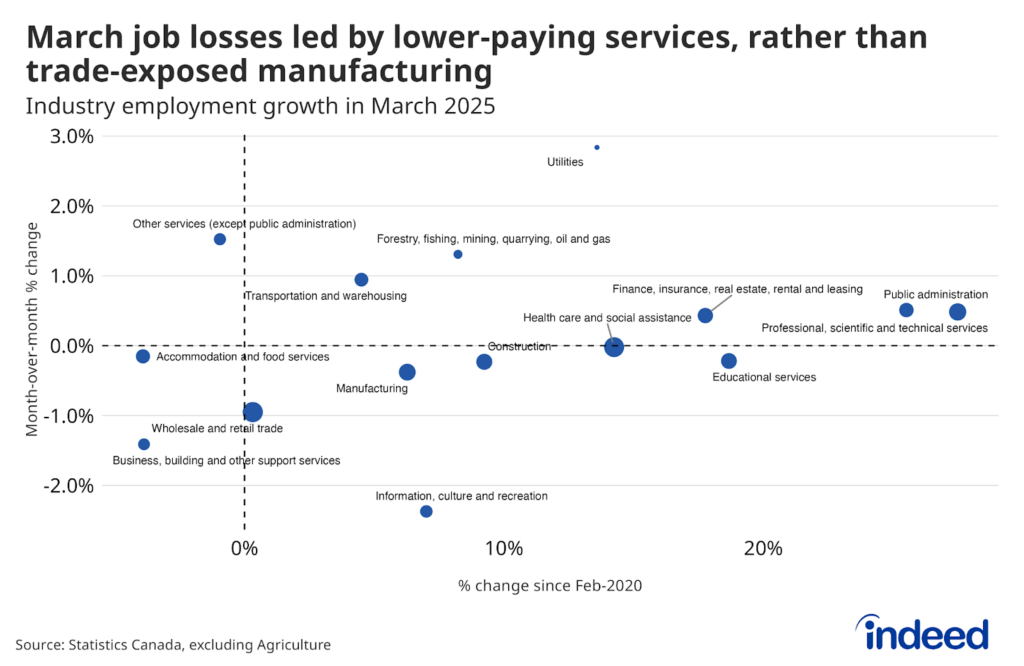Surprises have been fairly common throughout Canada’s labour market rebound, but wow, February’s rebound blew out January’s drop. The question leading up to the February Labour Force Survey report (LFS) was what portion of January’s job losses would be recouped as conditions relaxed across the country. The answer was that employment bounced back and then some.
Job gains were widespread. Accommodation and food services employment returned to where it stood in December, while retail and wholesale trade stood even higher. Major contributions also came from construction, as well as professional and technical services, with employment in the latter now standing at nearly 15% above its pre-pandemic level.
The share of Canadians age 15 and older with a job now stands just a hair below where it was in February 2020. Given population aging, hitting that milestone is all the more impressive. Also encouraging were further declines in long-term unemployment, which while still elevated, has been falling quickly since mid last year.
Supporting this recent growth has been ongoing momentum in employer demand. In mid-February, more new Canadian job postings were added to Indeed than at any point since the start of the pandemic. While we can’t expect job gains to continue at this pace, it’s clear that ongoing hiring appetite is translating into jobs. The key question now is what this means for paychecks. Hourly wage growth firmed up on a year-over-year basis, but still lags the pace of inflation. The key concern for the labour market has shifted, from the quantity of jobs, to how far people’s salaries can go.






